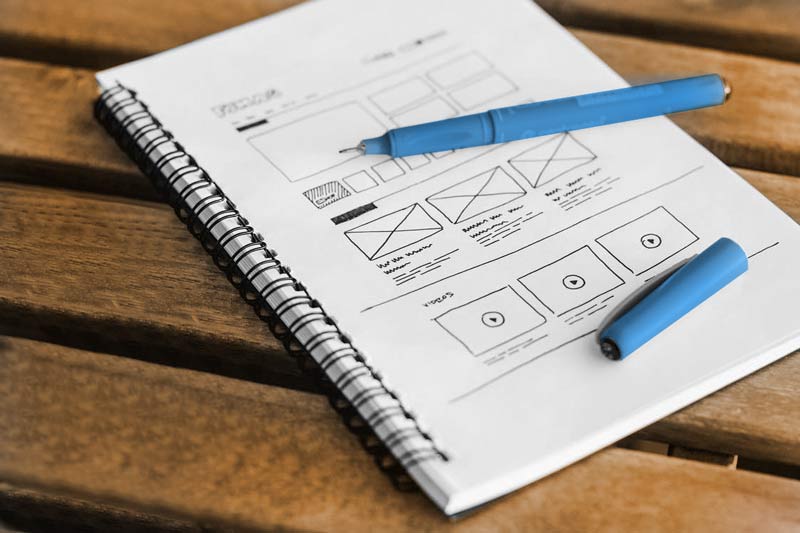
Many small businesses start off the New Year evaluating their marketing – and their website in particular. But redesigning or doing a major refresh to your website can cause your rank and search value to decline if you don’t plan ahead. This happen more often than not, and we often get a call AFTER the new site is launched — usually that is too late. Ranking, however is not the only issue, there are some best practices and technical requirements that you also need to keep in mind.
Here are the top things that you should know before you redesign or launch a new website:
 Know the goals for the website.
Know the goals for the website.
Most businesses know they need a website but don‘t identify a specific outcome, what they want it to do for them or how it will support their goals. They end up spending a great deal of time and money to revamp it, but have no clear measure of success. Be clear on what the 1 or 2 top goals are for your site so that your redesign aligns with them.
 Know your Metrics.
Know your Metrics.
By metrics I mean the right metrics. Metrics that truly provide insight into what is valuable on your existing site and what kind of traffic you have coming to it. This will give you a baseline to measure the new site against. Check out what pages get the most read time, what downloads are popular, and review any forms to see how you can shorten or streamlines them. Without knowing what is being viewed, you might unilaterally decide to move or eliminate a section of your website that is actually bringing you traffic and helping your rankings. You need to know what is working on the exiting site and try to maintain those areas.
 Know your Optimization Strategy
Know your Optimization Strategy
If you work with an SEO firm, they should be made aware of any major changes BEFORE you start so they can guide you through updates that maintain all the hard work they are did and for which you have already paid. Review your targeted keyword phrases, are they still accurate? Do you know what other sites are linking to yours? The biggest mistake that happens during an website update is restructuring the navigation and page URLs but not adding 301 redirects to from the old URLs point to the new pages. This creates a 404 error page that the search engines do not like and it affects the trustworthiness of your site
 Know your Audience.
Know your Audience.
This is key for any business in general, but more important when rewriting or refreshing content on your website. If you have a niche area or focus, knowing how to relate to the problems and challenges of your target will help you craft the right messages and content. If you have multiple audiences, you will need to think about how to design the site to accommodate more than one. But remember, the first priority for your site is the visitor, so content needs to be tailored for them. Rankings for your site are partly based on how long users stay on your site – more targeted, engaging content means longer site times.
 Your Maintenance Plan
Your Maintenance Plan
This sounds like something you would not worry about until after the site is launched, but how the site is built can depend greatly who is doing the updating. If you have a webmaster or designer that is doing the updating, the site may be able to support more customization or special functionality than if a novice or non-web saavy business owner wants to be able to do updates. It is also important to actually schedule out maintenance for updating things like the core coding and security software on a regular basis. If your site is on WordPress, Joomla or Drupal or an open source platform, there are likely other apps and plug-ins that also need to be updated. Anything that starts to get more than 6 months past an update can put your site at risk for security breaches, slow downs and broken pages.
Final Tips
Redesigning a website can be a daunting task but with good upfront planning can provide great rewards. Here is a list of 10 additional tips to keep in mind as you thinking about your site and what your goals are for 2018.
- Always make a backup of the existing site before launching the new – just in case!
- Be realistic about timeline and budget. Developing a good website takes planning and detailed focus.
- Make sure your site is mobile responsive – this is not optional at this point
- Make sure your site has an SSL certificate – this is not optional either and can affect how Google ranks your site.
- Make sure you add redirects for any old site pages to a new page
- Secure forms with captchas or other anti-spam options
- Phase out rotators and sliders – they slow the load times and research show people mostly ignore them
- Optimize large images to help with load times
- Make sure you have unique page titles and descriptions
- Add analytics tracking to your site and review regularly
Trends to think about for 2018
- Create simpler, more vibrant home pages
- Add animation, video and interactivity to engage the user
- Keep forms simple and only ask for what you need
- Use more neutral colors and custom typography
Happy redesigning, make it great.

 Know your Metrics.
Know your Metrics.